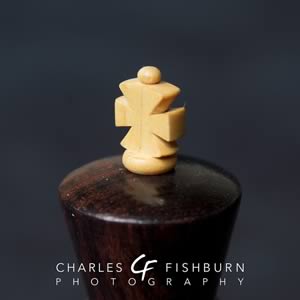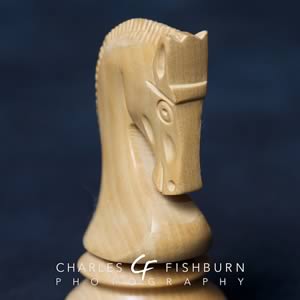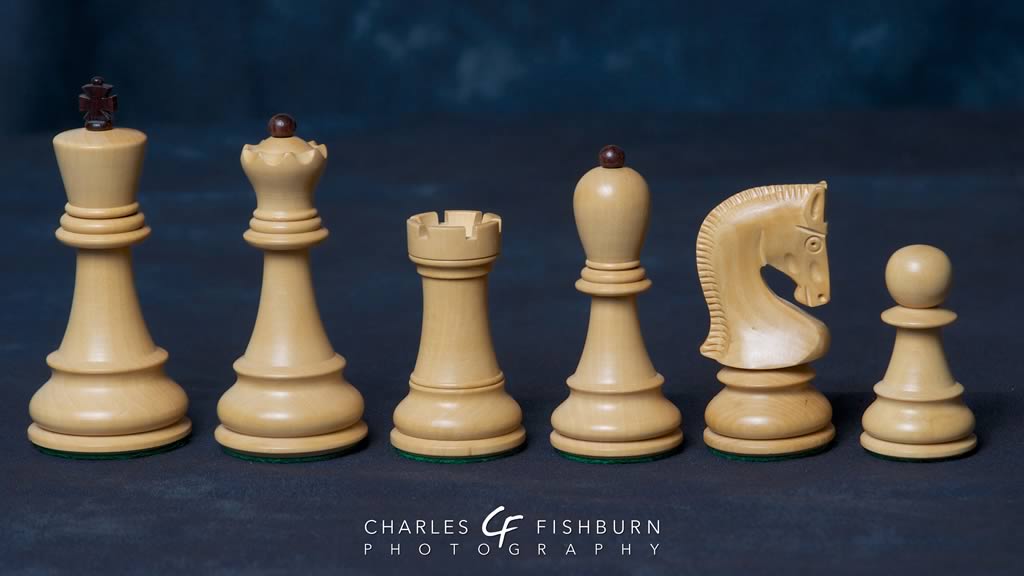
Updated 2016-05-01
Zagreb '59 Chess Set
from The House of Staunton
For some photos from a book about the tournament, click here.
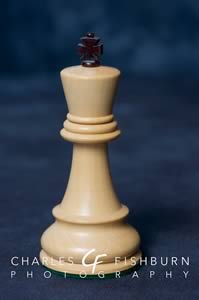
In 1959, the chess world's best of the best arrived in Yugoslavia to participate in the 4th Candidates Tournament, which was basically one big semi-final to determine who would challenge then-World Champion Mikhail Botvinnik for his title. The match ran from September 6 through October 31, 1959 and games from the quadruple round-robin match were played in Bled, Zagreb and Belgrade. The eight competitors were: Hungarian Pal Benko, the 16-year-old American Bobby Fischer, Yugoslav Svetozar Gligoric, Estonian Paul Keres, Icelander Fridrik Olaffson, Armenian Tigran Petrosian, Russian Vasily Smyslov and Latvian Mikhail Tal. Keres, Petrosian, and Smyslov, all representing the Soviet Union, finished the tournament in second, third and fourth, respectively. Fellow Soviet challenger Tal took first place with 20 points, 1½ points ahead of Keres, even though Keres won three of his four games against Tal. Fischer, who lost every game he played against Tal, finished 6th with 12½ points.
Chess is the art which expresses the science of logic.
— Mikhail Botvinnik (1911—1995), Russian Grandmaster
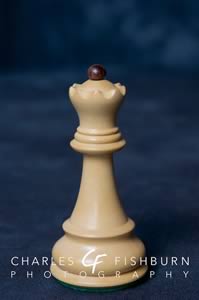
The set shown here is the first version that the House of Staunton [HoS] produced to commemorate this tournament. I purchased it in October 2001. Shortly after HoS released their set, I began to see other vendors selling very similar sets. The design is distinguished by three significant design points. The first point is the use of opposite-colored finials for the kings, queens, and bishops. That said, not all versions of this style of set have this feature. The second point is the lack of traditional miter cuts in the heads of the bishops. The last point, which is arguably the most noticeable and most identifying choice, is the long, downward-pointing head of the knight.
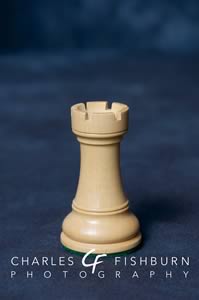
To conform more closely to tournament standards, the House of Staunton chose to use a cross finial on the king instead of the simple ball finial found on the sets used in the tournament. The queen has a ball finial with an interesting crown that is both pointed and rounded at the same time. The rounding of the outer rim softens its appearance a bit. The rook is clean but really unremarkable, which is probably just as well. The bishop, like the queen, features a ball finial. But unlike other Stauton-esque sets, as mentioned above, it does not feature any kind of miter cut or marking. I can't decide if I like the minimalist but entirely uniform bishops or not. The very unique knight has a longer neck than is typical, allowing the top of the head to come to the front of the piece. At the top of the face, the ears and the mane form a small three-point crown-like design. The base of the piece is a typical pedestal, and the lower part of the chest is very broad. But the piece tapers very quickly as the lines go back and up. So it feels very thin although it is still nicely weighted.
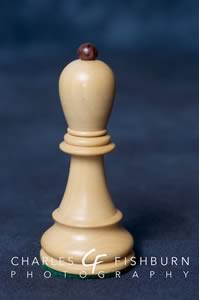
The old set upon which this was based had either a ball or a point finial atop the king. And while HoS originally changed it to a cross, they have gone back to using a ball and point finial for their newer versions. Among other changes, they flattened the edge of the queen's lowest collar. They lengthened the cheek indentation and sharpened the bottom of the chin on the knight. And they changed the collars on the pawns, giving them more of a downward-sloping, conical shape which actually seems to break from the style of the other pieces. And they changed the lowest ring at the base of the pieces. It might sound like quite a bit, but really, the changes are mostly relatively minor, and the main distinctions still apply to this style of set.
Design Dispute
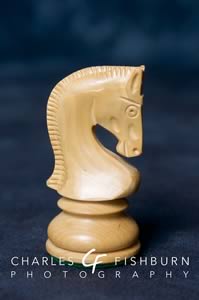
I have read that some people doubt the veracity of the claim that this style of set, sometimes called a "Russian Knight" chess set, was used in the Candidates Tournament. Of course, the tournament took place in Yugoslavia, not Russia. So if it was used in the tournament, maybe it should be known as a "Yugoslav Knight" rather than "Russian Knight". I have seen old photos of Russian chess clubs and tournaments, but I'm not convinced that the knights I saw in those photos are the same as in this set.
In March 1960, the Yugoslavian Chess Union (Шахматный союз Югославии) published a book detailing this event with game annotations, photos and even some caricatures. The Russian translation of the book is titled "Турнир Претендентов" ("Contenders Tournament"), and I happen to own a copy. While the book contains many black-and-white photos, some are rather low quality and some were taken far enough away from the board that piece detail is not easily made out. In some of the photos, you can see clearly that the queens did not have opposite-colored finials but the bishops definitely did. I would wager that the tops of the rooks were actually a bit shorter than they are in this set. And perhaps more disappointingly is that the knights don't seem to be quite the same. When I have a bit more time, I'll address that in a little more detail.
Despite any questions about the origins of this set, it is still a very high quality House of Staunton set that has some unique design features, looks great, and is a pleasure to use on the chessboard.
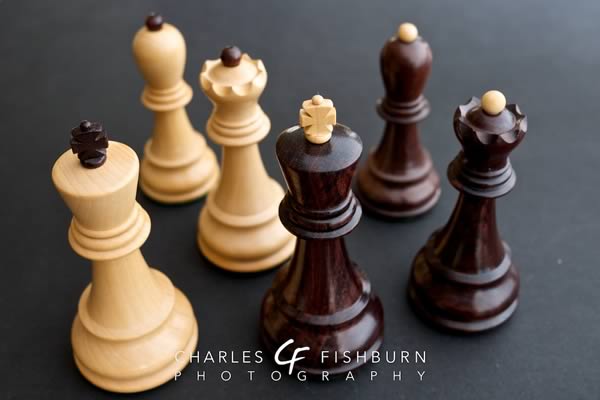
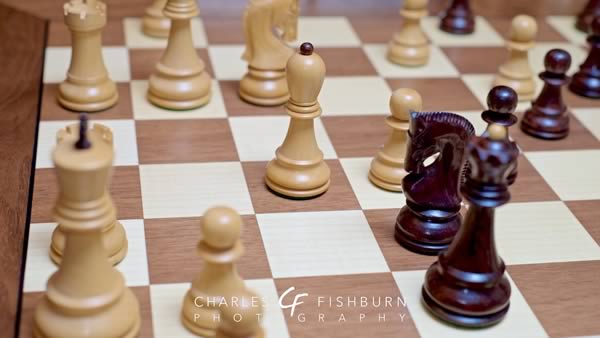
Round 6, Move 25. Be3
Tal wins on move 41 when Fischer resigned.

